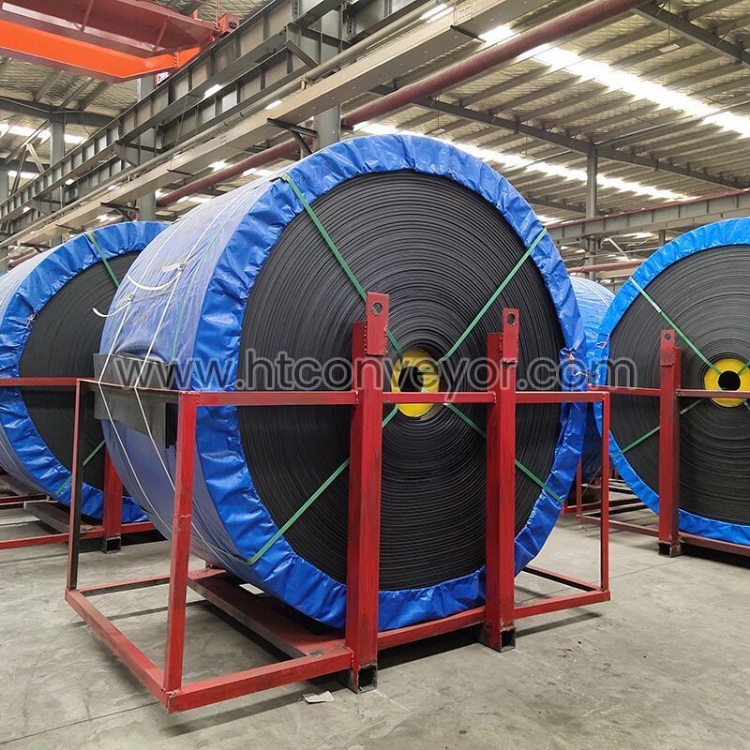Customizing Your Rubber Conveyor Belts for Unique Applications
Customizing Your Rubber Conveyor Belts for Unique Applications
Blog Article

In today's fast-paced industrial landscape, the need for tailored solutions is more crucial than ever. Customizing conveyor belts to meet specific operational needs can significantly enhance productivity and efficiency across various sectors. Rubber conveyor belts, PVC conveyor belts, and rubber drive belts are integral components in many manufacturing processes, and their design can greatly impact overall performance.
Understanding the unique requirements of different applications allows manufacturers to innovate and adapt these belts accordingly. Whether it is for heavy-duty transport in mining operations or delicate handling in food processing, the development and production of these belts cater to diverse needs, achieving optimal functionality and longevity. By exploring customization options, businesses can ensure they select the right materials and configurations to enhance their unique operations.
Understanding Conveyor Belt Materials
When it comes to conveyor belts, the choice of material is crucial for ensuring optimal performance in various applications. Rubber conveyor belts are favored for their durability and flexibility, making them ideal for handling heavy loads and operating in challenging environments. They can withstand abrasions, impacts, and even extreme temperatures, which is essential in industries like mining, construction, and manufacturing. This versatility allows for customization in design and production to meet specific demands.
Steel Cord Conveyor Belt Supplier
In contrast, PVC conveyor belts offer a lightweight and cost-effective solution for applications that require less heavy-duty performance. These belts are resistant to moisture and chemicals, making them suitable for food processing or packaging industries. The smooth surface of PVC belts also minimizes friction, which can enhance efficiency in operations where speed is important. Understanding the properties of PVC helps in selecting the right conveyor system for environments that prioritize cleanliness and safety.
Rubber drive belts are another essential component in the conveyor belt family. These belts are designed to transmit power in machinery effectively, ensuring smooth operation in various mechanical setups. The elasticity and grip of rubber enable them to handle tension and resist wear, which extends their lifespan. Both in design and development, understanding the unique characteristics of these materials allows for the creation of customized solutions that align with the specific needs of different industries and applications.
Design Considerations for Custom Applications
When designing rubber conveyor belts for unique applications, several factors must be taken into account to ensure optimal performance. The intended use of the conveyor system often dictates the choice of materials, such as rubber or PVC, and specific features like thickness and surface texture. Understanding the environment the belts will operate in, including temperature fluctuations, exposure to chemicals, and moisture levels, is essential for selecting the right compounds that can withstand these conditions without deteriorating.
Another critical aspect is the load capacity the conveyor belts need to support. Customizing the belt width, length, and strength allows for effective handling of varying loads, ensuring that the belts can operate efficiently without risk of failure. Additionally, integrating features such as sidewalls or cleats may be necessary for applications involving steep inclines or irregularly shaped products. Regulatory compliance and safety standards must also be adhered to during the design process, enhancing the reliability of the conveyor system in commercial and industrial settings.
Finally, the production of rubber conveyor belts involves precise engineering and quality control. Collaborating closely with manufacturers enables the incorporation of specific design elements that improve durability and functionality. Testing prototypes under real-world conditions helps identify any potential issues early in the development process, allowing for modifications before final production. This attention to detail in the design phase ensures that the custom belts will meet the unique needs of each application effectively.
Manufacturing Processes for Conveyor Belts
The manufacturing processes for rubber conveyor belts, PVC conveyor belts, and rubber drive belts are essential in ensuring their durability and functionality. The initial step typically involves selecting the right materials based on the specific application. High-quality rubber compounds are often chosen for rubber belts due to their excellent abrasion resistance and flexibility. For PVC belts, the selection of the appropriate polymer is critical for ensuring optimal performance in various environments.
Once the materials are chosen, the production process begins with calendering, where the rubber or PVC is shaped into sheets of the desired thickness. These sheets are then cut and assembled with reinforcement fabrics, such as polyester or nylon, to enhance strength and stability. During the vulcanization process, the belts are subjected to heat and pressure, transforming the rubber into a resilient and elastic state. This step is crucial as it guarantees the long-term performance and reliability of the conveyor belts.
Finally, the finishing touches are applied, which may include adding rubber cleats or special coatings tailored for specific applications. Quality control measures are implemented throughout the production to ensure that each belt meets industry standards and customer specifications. By following these meticulous processes, manufacturers can produce customized rubber and PVC conveyor belts that cater to a wide range of unique industrial needs.
Report this page